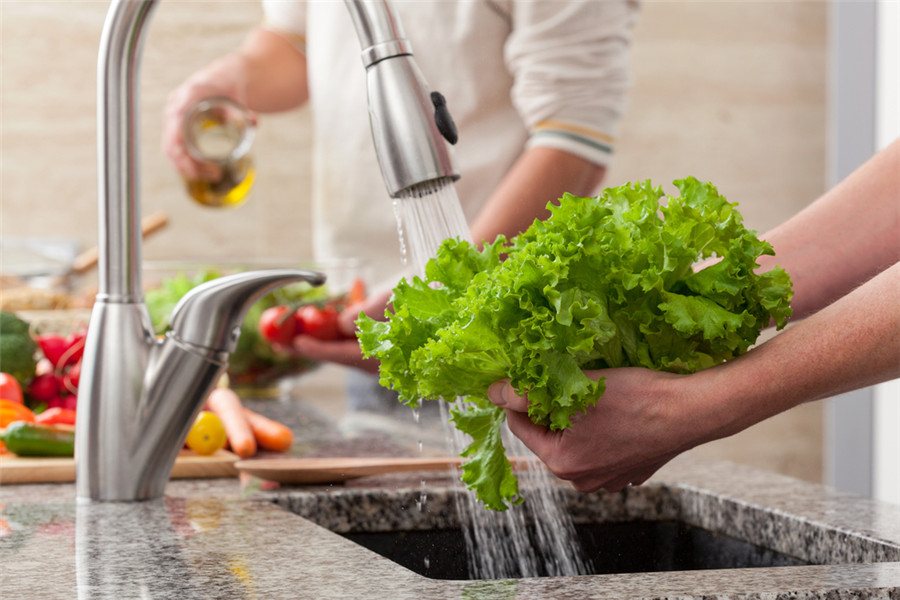
The staple food for diabetics, in addition to dry white rice and coarse grain rice, can actually have many choices. Moreover, it is not necessary to stir-fry and dry rice in the same way. It is a good choice to try western food appropriately, change the dishes and enhance the pleasure of eating.
What I recommend to you today is: Seafood Tomato Spaghetti.
Making Steps
Raw materials: 50g straight spaghetti, 50g shrimp, 130g big tomato (the smaller one), 50g onion (less than half of ordinary size), 50g zucchini, 50g Tricholoma matsutake, 50g broccoli, 30g red and yellow cherry tomatoes (optional); Appropriate amount of olive oil (about 10g), 1 tbsp of low sodium ketchup about 20g, and other seasonings, including black pepper, rosemary powder, thyme powder, basil powder, etc. (can be added or not added according to personal preference).
Detailed steps:
Step 1 Make Noodle Sauce
(1) Chop tomatoes and onions, cut zucchini and Tricholoma matsutake into small pieces; Remove shrimps and wash them.
(2) Heat the non-stick pan, add oil, stir-fry onion chopped for about 3 minutes; Stir-fry the chopped tomatoes slowly until the water is analyzed, turn to medium heat and boil, add a spoonful of low sodium ketchup, black pepper, rosemary powder, thyme powder and basil powder;
(3) adding Tricholoma matsutake and zucchini and boiling over low fire; Finally, add shrimps, stir-fry quickly, and fill out all the noodle sauce soup.
Step 2 Prepare side dishes
Broccoli is broken into small pieces and blanched in boiling water (to maintain crisp and hard taste and chewiness, blanching time should be short); The cherry tomatoes are all two from the middle (not added).
Step 3: Cook spaghetti
Add water to the pan, add spaghetti after boiling, boil for about 8 minutes without hard heart, and then take it out.
Step 4 Mix well with the ingredients
Drain the spaghetti, stir-fry it quickly in the boiled noodle sauce soup to make it fully tasty, and put it out on a plate.
Nutrition Tips
1. Calories and nutrition
This seafood tomato pasta has 412 kilocalories (20.6% of the recommended daily intake NRV, the same below) and contains 57.0 g (19.0%) of carbohydrate, 22.5 g (37.5%) of protein and 11.4 g (19.0%) of fat. It is suitable for diabetics who want to control energy intake. It can be eaten as a one-person meal with vegetables and an extra meal after about 2 hours.
This seafood tomato pasta contains 626 micrograms of vitamin A RE (retinol equivalent) (78.3%), vitamin B1 0.17 mg (12.4%), vitamin B2 0.33%, vitamin C 51 mg (51.0%), calcium 106 mg (13.3%), iron 4.2 mg (27.9%), zinc 3.16 mg (21.0%), potassium 908 mg (45.4%), magnesium 94 mg (31.3%) and dietary fiber 3.4 mg (13.8%).
2. Choice of ingredients
(1) Tomatoes: Can diabetics eat tomatoes? Yes! Thanks to lycopene, tomato fiber, etc., eating tomatoes not only helps to control blood sugar stability, but also has certain effects of relieving diabetes complicated with hypertension, retinopathy, controlling blood lipid and preventing thrombosis.
Many friends worry that small tomatoes (cherry tomatoes) are sweet and cannot be eaten by diabetics. Indeed, large and small tomatoes have different varieties and different nutritional ingredients. Small tomatoes contain slightly more sugar than large tomatoes, but the sugar content is less than 5%. Compared with other fruits, they still have lower sugar content, low blood sugar response and relatively higher vitamin content.
Therefore, tomatoes, large and small, are suitable for diabetics. Take them as daily fruit choices, eat their fist-sized portions (about 150-200g), as extra meals, or make them into dishes, which are all good choices.
(2) Ketchup: Some friends have some scruples about the use of ketchup in cooking. Here, I hope you can first pay attention to distinguish different ketchup:
- A kind of tomato sauce, tomato sauce (English name: tomato sauce or ketchup), usually contains white granulated sugar, high fructose syrup or starch and edible salt in the ingredient list, generally with sodium content as high as nearly 1000 mg/100g, heavy taste, rich sour, sweet and salty taste, bottled or portable bags; The other is pure tomato paste. The ingredients are only tomato paste and water, with a sodium content of 100 mg/100g and packed in iron cans.
Choosing the latter for seasoning has little effect on blood sugar and can control sugar and salt.
(3) Spaghetti: If the spaghetti is replaced by buckwheat noodles, whole wheat noodles or even fine dried noodles, the problem is not big.
However, pasta (also called macaroni and spaghetti) is more recommended for diabetics because pasta is different from ordinary noodles or noodles and is made of hard wheat with high protein and gluten. Noodles have stronger taste and chewiness than white noodles. Besides straight strips, pasta also has spiral, elbow, butterfly, wheel and other shapes, which can slow down the eating speed. The overall blood sugar response is lower.
With your favorite side dishes, shrimps provide high-quality protein, and broccoli, Tricholoma matsutake and zucchini are also available [mixed], which will soon make a delicious and balanced sugar-controlled meal.
Don’t forget the old rules, remember to eat a few more dishes before eating noodles.
